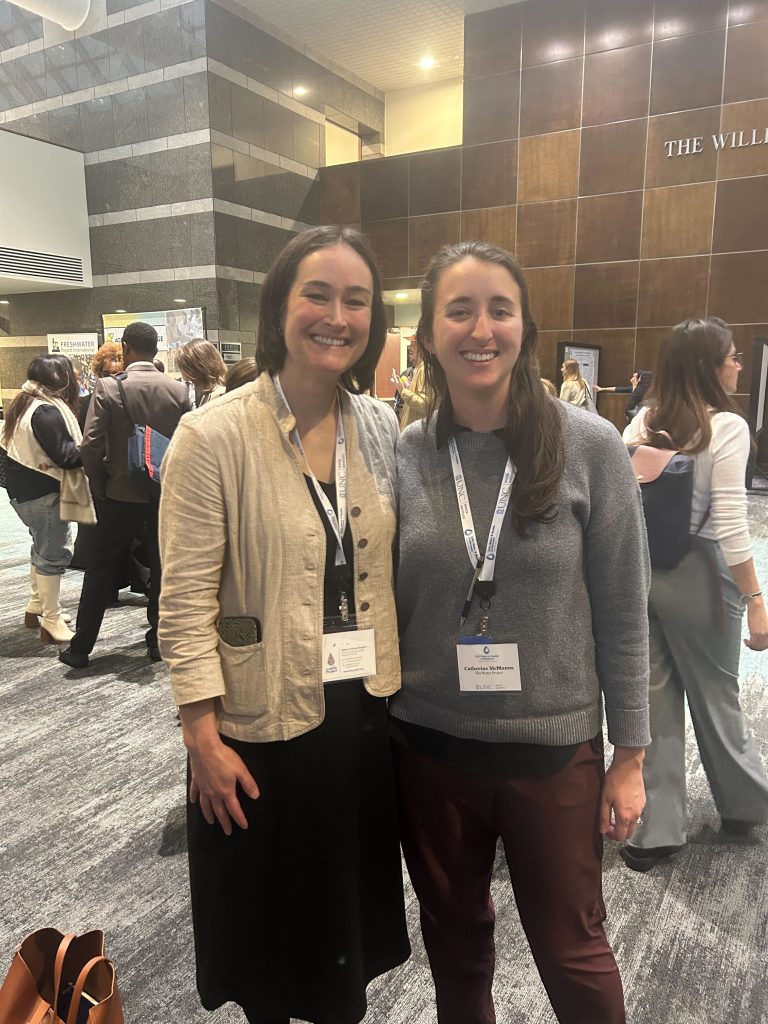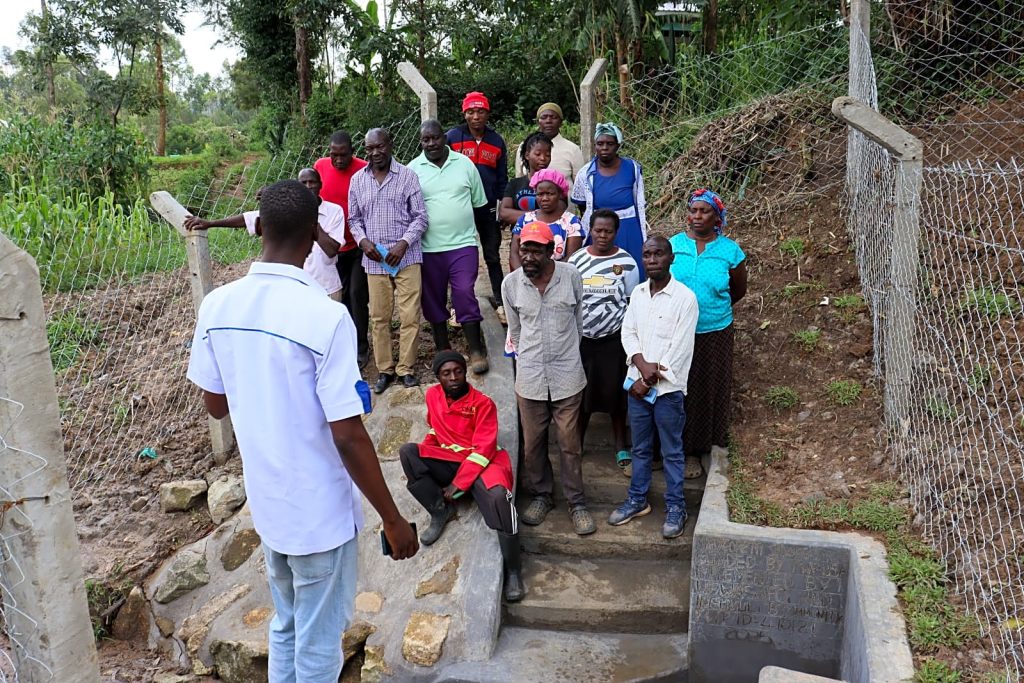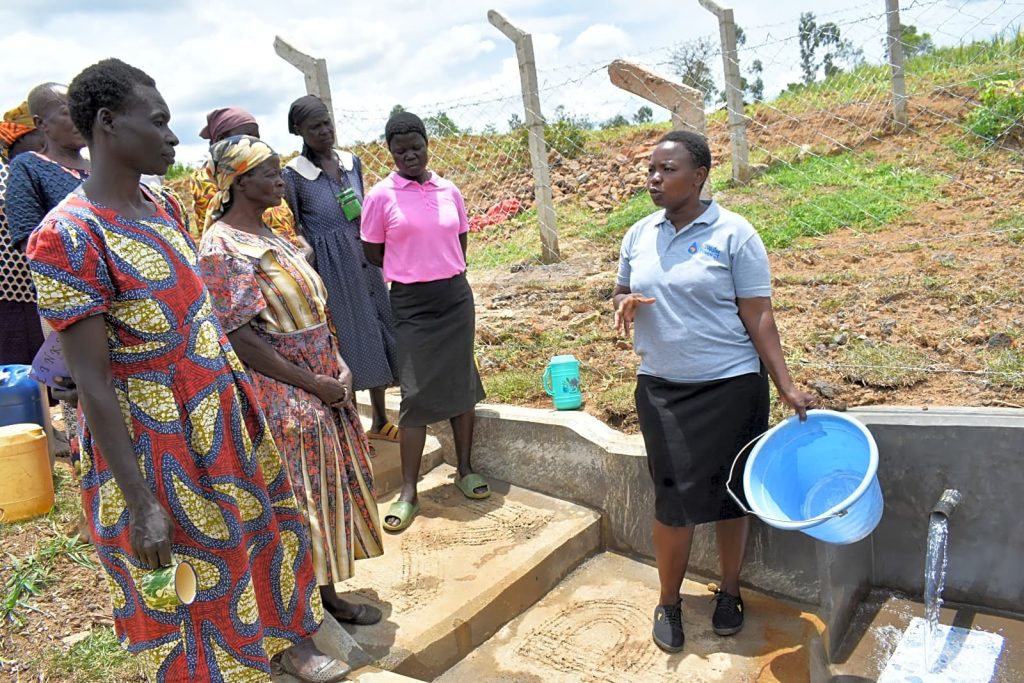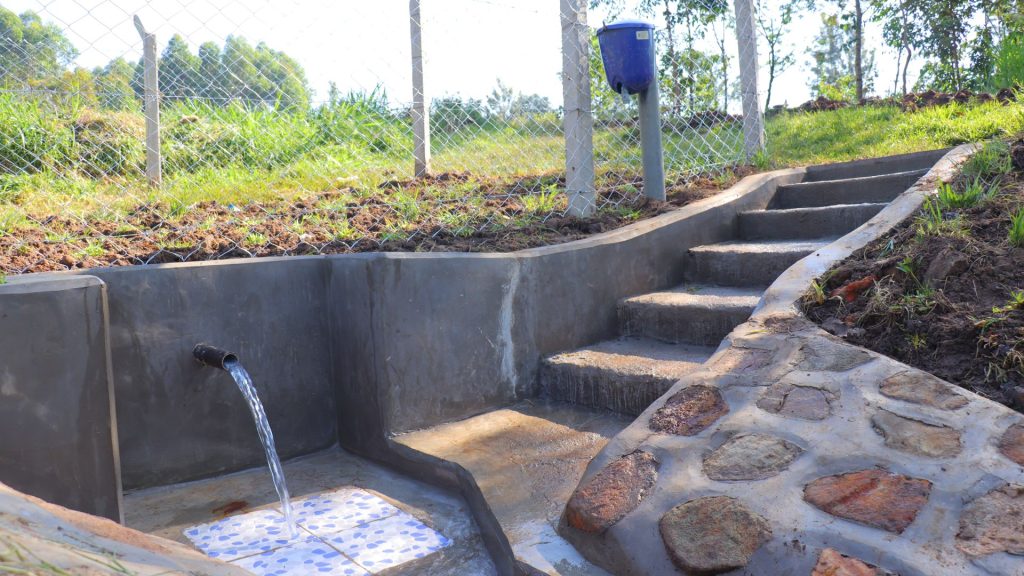Research and Reflections from the UNC Water and Health Conference 2025
Allison and Catherine, both part of The Water Project’s Monitoring, Evaluation, Resolution, and Learning (MERL) department, recently attended the University of North Carolina (UNC) Water and Health Conference in Chapel Hill, North Carolina. They both had the opportunity to present posters during the conference showcasing The Water Project’s work and contributions to sector research. They share their reflections from the conference and summaries of the work they presented below.

Allison’s reflections
I have been fortunate enough to attend the UNC Water and Health Conference many times over the years. Each time I return to Chapel Hill, I am reminded why this gathering is so special. Participants from around the world gather to discuss research findings, new technologies, and emerging challenges. It’s an opportunity to connect with colleagues across the sector, learn from one another, and identify opportunities for collaboration. The energy at this conference is contagious.
One theme that stood out to me this year was how the Water, Sanitation, and Hygiene (WaSH) sector is adjusting to shifts in funding. With the conclusion of USAID’s long-standing support for WaSH work around the world, the sector is adapting to navigate a new funding landscape. I greatly appreciated the opportunity to participate in sessions where experts shared their insights into what we can expect in terms of funding, monitoring requirements, and program priorities as funding continues to shift in the future.
Catherine’s reflections
One example where we saw some evidence of a shift from small interventions to larger, system-level water solutions was in a conversation about water quality. Historically, much of the discussion about drinking water treatment has focused on filters — often for individual households. Lately, though, discussions have evolved to focus on the treatment of entire water systems, often through chlorination. This removes the burden of treatment from community members, but comes with the complexities of design and implementation. However, it also might enable rural water service providers to report operational data of interest to the new types of funders Allison mentioned, and which are used by urban utilities around the world!
No one seems too daunted by the increased technical challenges, though. It was great to see our colleagues working together to address these complexities, all in the name of providing better service to users of rural water supply systems.
Allison’s poster presentation on protected spring management in Western Kenya: the role of water user committees (WUCs) and landowners
I had the opportunity to present a poster focused on the management of protected springs and the critical role landowners play in sustaining them. We identified ten communities with protected spring projects in Western Kenya and visited them to gain a deeper understanding of the challenges faced by their Water User Committees (WUCs), a group of volunteers who take on the day-to-day management of these water points.
With every spring protection project, our partners work with the communities to establish WUCs. Much of our training and emphasis on water point management focuses on the WUCs, but this study revealed the significant influence landowners have on both the daily operations and long-term sustainability of these systems.


Identification of management barriers
We conducted extensive data collection with each of the ten communities that we visited. This included focus group discussions with WUCs and water users and in-depth interviews with landowners. We were able to learn more about the day-to-day management tasks that WUCs are responsible for (such as cleaning around the water point and enforcing use rules) and barriers that can make it challenging for WUCs to carry out their responsibilities effectively. We analyzed the data to identify seven key challenges facing WUCs:
- Lack of financial resources
- Access to training
- Authority to enforce rules
- Communication among stakeholders
- Clarity on roles and responsibilities
- Landowner engagement and cooperation

The role of the landowner in spring management
Across all sites, the influence of landowners emerged as a consistent factor in spring management success. Communities with supportive landowners, those who maintained positive relationships with both the WUCs and water users, created more favorable conditions for effective and sustainable spring operation.
However, in half of the ten communities we studied, tension between landowners and water users posed management challenges. Conflicts often arose over land use practices, such as agricultural activities that risked polluting or depleting the spring’s water resources (for example, planting fast-growing eucalyptus trees that commandeer groundwater). In several cases, disputes led landowners to prevent the WUC from carrying out essential maintenance, directly impacting the spring’s functionality and long-term sustainability.
Key findings and implications for our work with WUCs in Western Kenya
Our study revealed the key management barriers affecting the WUCs that we work with in Western Kenya and the critical role that landowners play in managing protected springs. Through this study, we saw how landowner participation can support or hinder water access. While WUCs are the designated managing body, landowners often hold more practical authority, making them essential partners in spring management.
Despite this, our efforts to support water point managers have often focused on the WUCs, overlooking the role of landowners. We learned that changes in land ownership add additional complexity, as management systems must be designed to support changes in this role during the potentially decades-long lifespan of a protected spring. We identified a need for landowners to be considered more comprehensively during project implementation and beyond, both in management training and through the formalization of access agreements that persist beyond changes in land ownership. Doing so could help ensure more sustainable access to springs in the long term.
Catherine’s poster on the impacts of rainfall and chlorination on contamination of groundwater sources
Although The Water Project (TWP) implements what the World Health Organization calls improved water sources, the potential still exists for microbiological (bacterial) contamination to enter a water point. My poster presented our ongoing analysis of the relationship between this kind of contamination and rainfall — and how we might be able to treat it. The poster presented data from groundwater sources (boreholes and protected dug wells) in all of TWP’s program areas for the last five years.
We used water quality data we collect twice yearly at wells to explore how rainfall can affect microbiological water quality. E. coli is an indicator bacteria: a sign of contamination of a water point. This contamination can come from garbage or human and animal waste on the ground’s surface, and then be flushed into the ground (and water point) by rainfall. We found that E. coli levels are higher in our wells after periods of rain (compared to dry periods), and that this effect is more pronounced at dug wells than boreholes. This makes sense because boreholes are deeper than dug wells, and so may be less susceptible to surface contaminants.
The efficacy of shock chlorination
We also wanted to know the efficacy of shock chlorination in removing E. coli from wells. Shock chlorination involves pouring a highly concentrated chlorine solution into the water point and letting it sit to eliminate bacteria.

We compared E. coli test results collected before and after shock chlorination. We found that in our most recent rounds of shock chlorination, it was effective in reducing average E. coli prevalence by 74% at boreholes and 60% in dug wells if the water point had a positive E. coli result before shocking. Shock chlorination completely eliminated E. coli (according to follow-up tests) in 56% of those instances!
Results of shock chlorination if E. coli was present at the initial water quality test
| Boreholes | Dug Wells | |
| Number of chlorinations where pre-chlorination E. coli was >0 | 114 | 70 |
| Average pre-chlorination E. coli count (CFU or MPN/100ml) | 47 | 69 |
| Average post-chlorination E. coli count (CFU or MPN/100ml) | 12 | 29 |
| % with 0 E. coli count at follow-up | 57% | 56% |
The importance of pairing shock chlorination with sanitary inspections
So, shock chlorination is not a perfect method of eliminating bacterial contamination, but it does improve water quality substantially. The most important step in the process, though, has nothing to do with chlorine.
To keep water in wells safe, it’s most important to minimize any possible sources of contamination from entering the water point. This means conducting a sanitary inspection, which assesses the area surrounding the water point to identify possible sources of contamination (such as human or animal waste disposal sites) or pathways of contamination entry (such as cracks in the concrete well pad).

Part of the process of any successful shock chlorination is a sanitary inspection, fixing any identified issues, and engaging with community members to promote the protection of the water point. Shock chlorination can eliminate bacteria that’s already in the well, but it can’t prevent bacteria from entering the water point in the future — and that’s why we need sanitary inspections and resolution. Our comprehensive approach to water quality management allows us to have much greater confidence in the safety of water at TWP groundwater sources.
Conclusion
Attending the UNC Water and Health Conference was a meaningful opportunity for us to both share our work and learn from others in the global WaSH community. The conversations and connections made in Chapel Hill help strengthen our approach, inform our programs, and ensure that we continue to improve water access and sustainability. We’re grateful for the chance to represent our partners in the field and the communities we serve, and to bring those insights back to our ongoing work.
Home More Like ThisTweet